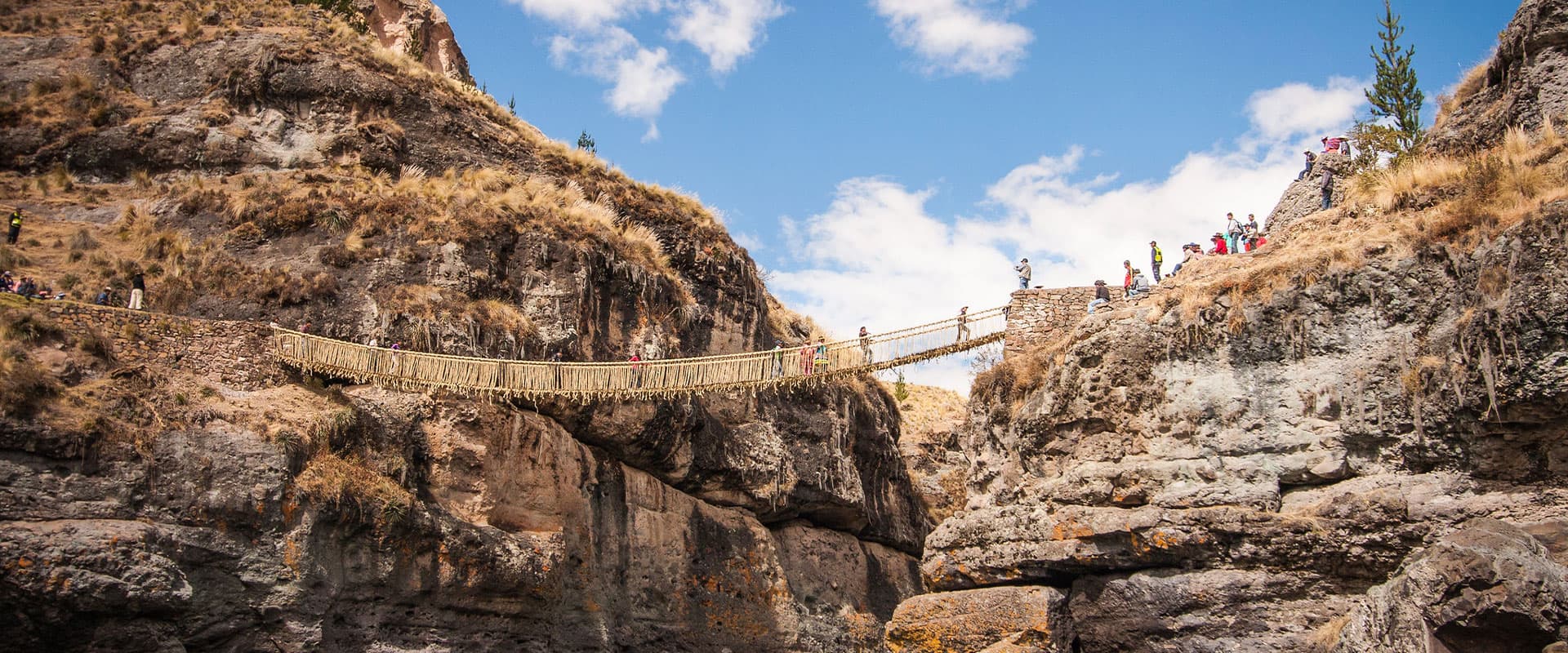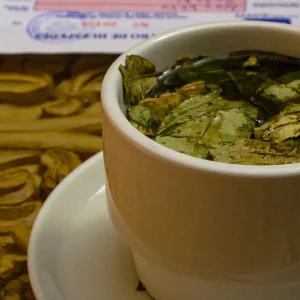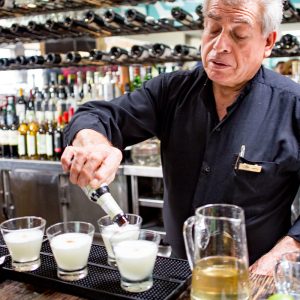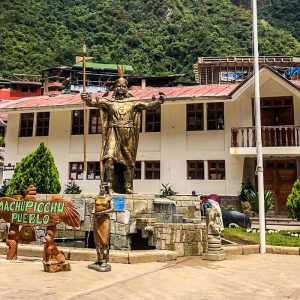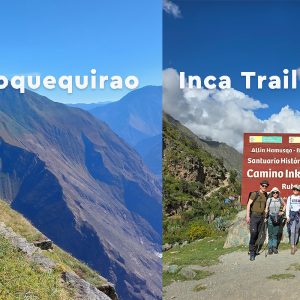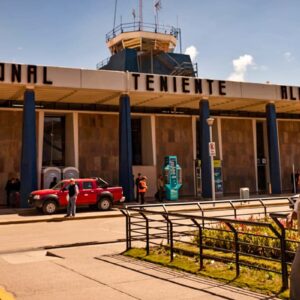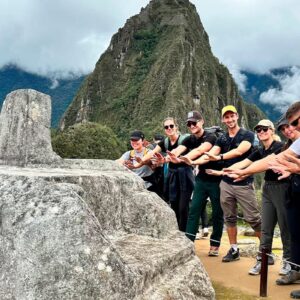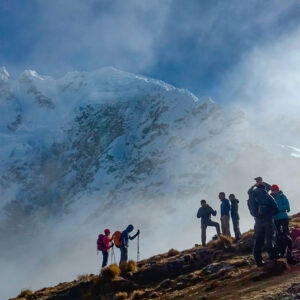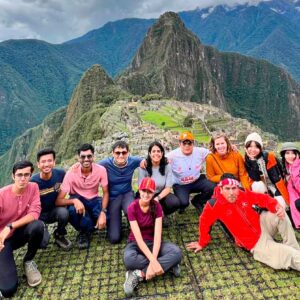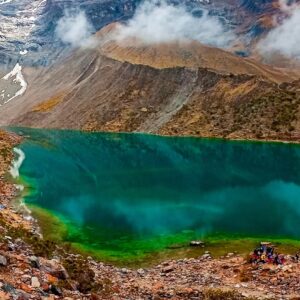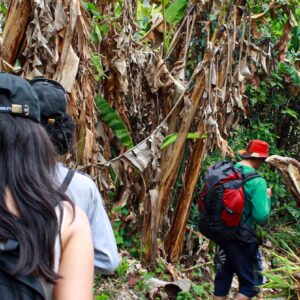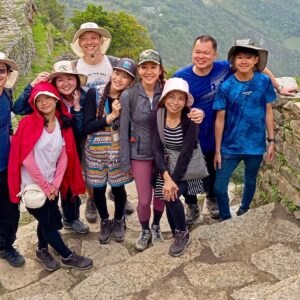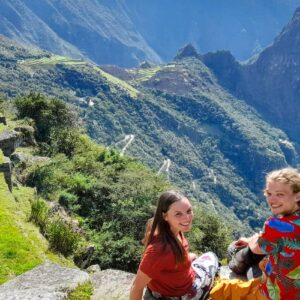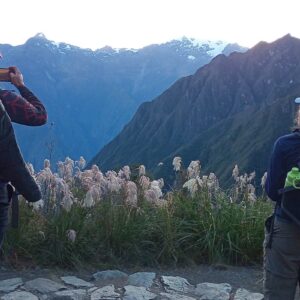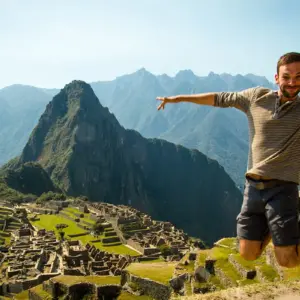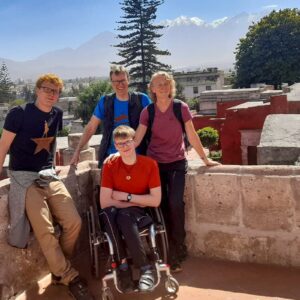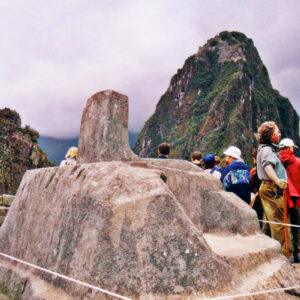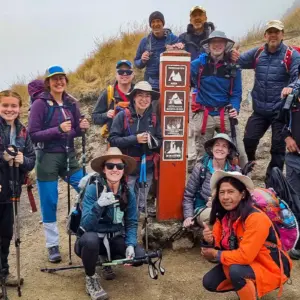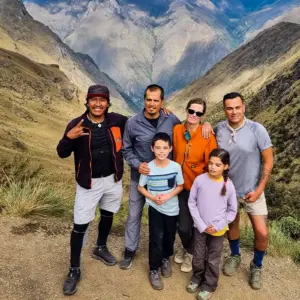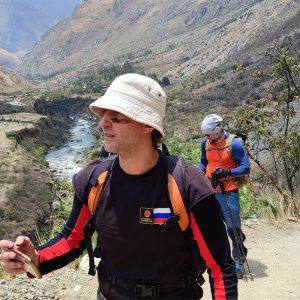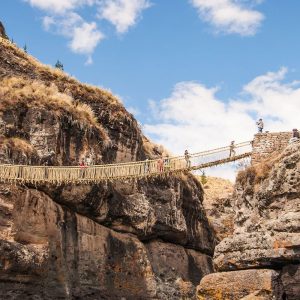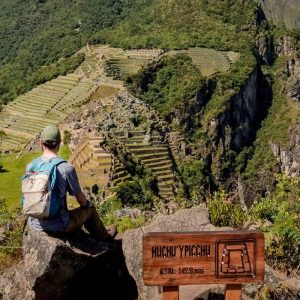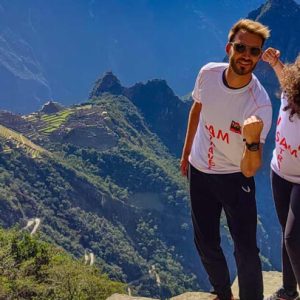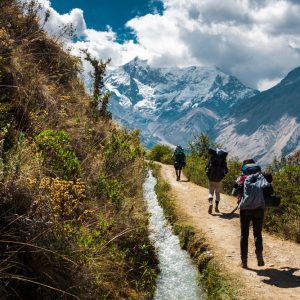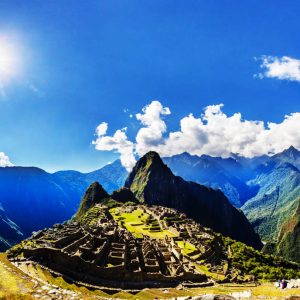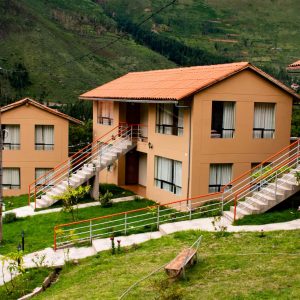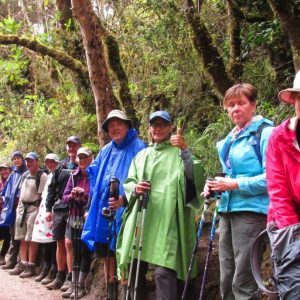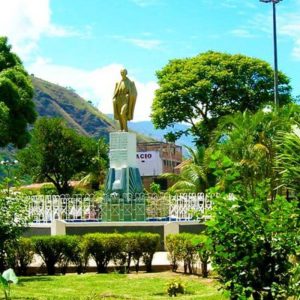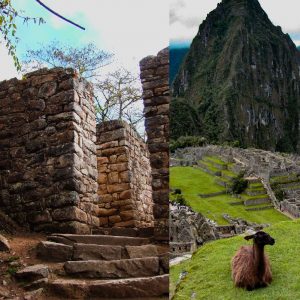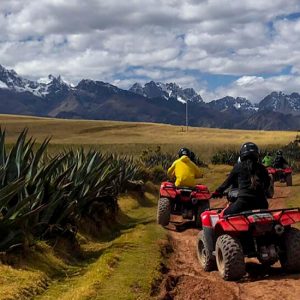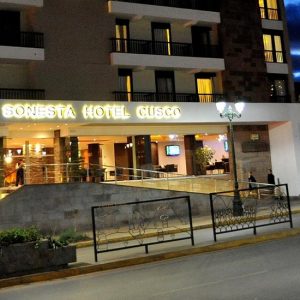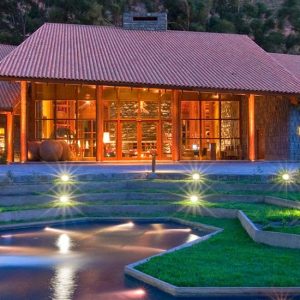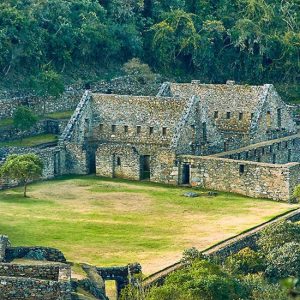The Q’eswachaka Bridge is a suspension bridge made of vegetable fiber located in the Cusco region of Peru. It is known as the last Inca rope bridge and is considered a symbol of Incan culture and engineering.
Qeshuacha Location
The bridge is located in the Canas province at an altitude of 3,700 meters above sea level and is part of the Inca road system that connected the different towns and cities of the empire. It is believed to have been built over 500 years ago and has been rebuilt every year by the local community using traditional techniques and materials.
The construction of the Q’eswachaka Bridge begins with the selection of ichu plants, a grass from the Andean highlands. The plants are cut and braided into ropes a few meters long, which are then joined together to form the main ropes of the bridge.
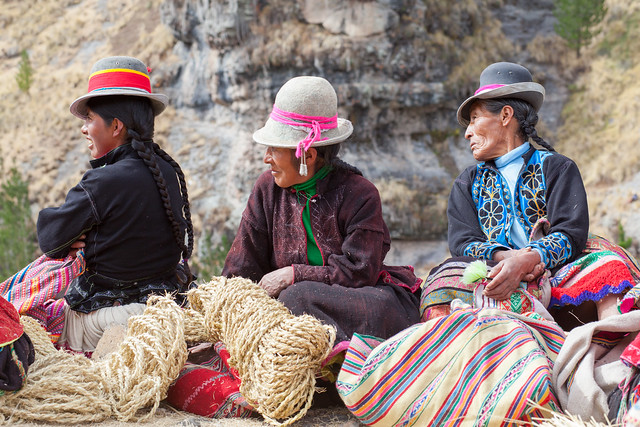
After the ropes are prepared, the supports of the bridge are constructed. These are made of wood and are placed on both sides of the river, a distance corresponding to the length of the bridge. The main ropes are tied to the supports and tightened to create the basic structure of the bridge.
Then, the cross ropes that form the base of the bridge are added and tied to the main ropes. Once the bridge structure is complete, wooden planks are placed on the cross ropes to create a walking surface.
The bridge construction process can take up to three days, depending on the weather conditions and the number of people involved in the construction. After construction, a traditional ceremony is held to bless the spirits and thank Pachamama (mother earth) for the opportunity to build and use the bridge.
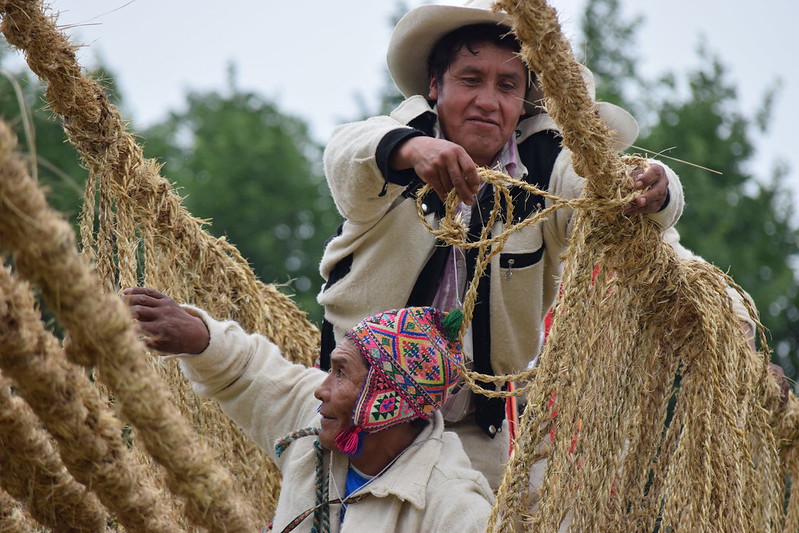
The Q’eswachaka Bridge has become a popular tourist destination in Peru due to its cultural and historical significance. It was declared an Intangible Cultural Heritage by UNESCO in 2013, leading to increased interest and preservation of the bridge and the culture surrounding it.
In summary, the Q’eswachaka Bridge is an impressive example of the skill and engineering of the Incan civilization, as well as a symbol of the culture and tradition of the Cusco region. Its annual reconstruction by the local community is a reminder of the importance of preserving the history and culture of Peru.

